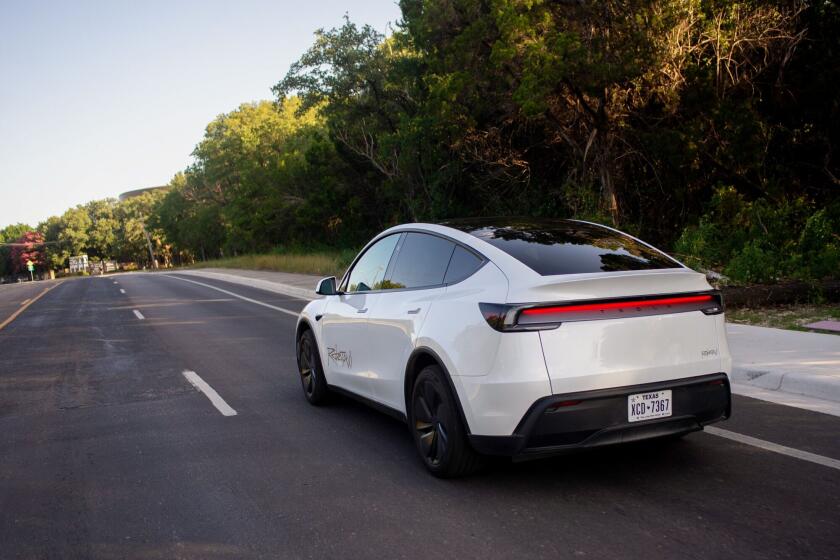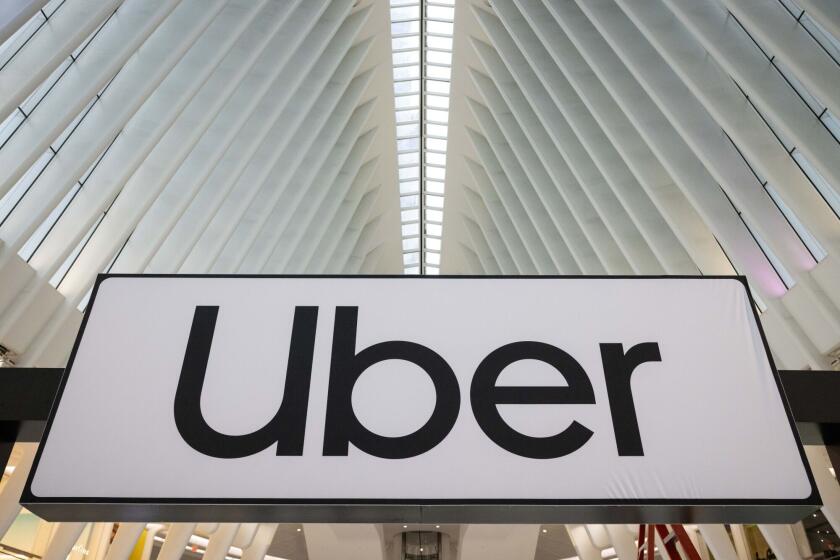New Chapter for Old Airport : Aviation: For former pilots, workers and visitors, the Grand Central Air Terminal’s rebirth as a Disney media campus is a welcome development.
- Share via
GLENDALE — At first glance, it’s just another Southern California industrial park, with more telephone poles than trees. But Glendale’s Grand Central Air Terminal really was grand once, and central, too--home to the first paved runways west of the Rocky Mountains, drawing the rich, the famous and the pioneering.
Hoping to write a new chapter for the 113-acre site, Walt Disney Co. announced plans Wednesday to turn it into a tree-shaded media campus and renovate the surviving terminal building as a visitors center.
The news heartened people who grew up in the area and still recall the days when aviation was as glamorous as the movie stars and moguls it attracted.
Newspaper magnate William Randolph Hearst kept a plane here for commuting to his San Simeon castle. Douglas Fairbanks, Hoot Gibson, Gary Cooper, Jean Harlow and Shirley Temple, among other stars, flew in and out of Glendale. And aviation giants Charles Lindbergh, Amelia Earhart and Howard Hughes also lit upon the runway, which since 1961 has lain beneath a conglomeration of nondescript warehouses and offices.
Douglas “Wrong Way” Corrigan, famous for his “accidental” and unauthorized Atlantic flight in 1938, built his plane here and led a parade through downtown Los Angeles to celebrate the feat.
To his dying day, Corrigan denied that he intentionally defied the U. S. government officials who said his tiny $310 “crate” was too shoddy to fly across the ocean. Fellow pilot Jim Cullen, now 84, still doesn’t believe that.
“That was well-planned,” said Cullen, an acquaintance of Corrigan’s. “He had a determination to do that.”
Cullen grew up in Eagle Rock and was in high school in 1927 when Lindbergh flew across the Atlantic in the Spirit of St. Louis.
“I used to ride my bike over from Eagle Rock to see the Slate Dirigible,” an ill-conceived aluminum blimp that drew a crowd of 3,000 for its 1929 launch in Glendale.
“There were gasps of horror as a bulge began forming on the upper section of the bow,” according to John Underwood’s history of the airport, “Madcaps, Millionaires and ‘Mose.’ ” “A moment later there was a sharp report and a staccato bursting of rivet heads. It sounded like gunfire.”
The blimp never flew again.
Mountains Create Favorable Winds
At the dawn of the aviation age, Grand Central Air Terminal was nothing but a field, bounded by an orange grove on one side and vineyards on the others. The Verdugo Mountains created wind conditions favorable for flying.
Pilots, usually rich adventurers--the only sort who could afford air travel at the time--landed their biplanes on the dirt strip beginning in 1923. Repeated attempts to finance a municipal airport failed, however, and eventually private investors bought the airport in 1928. They installed paved runways and constructed the terminal building, with its Art Deco observation tower, by 1929.
The airport even had a hotel, called the Aviation Country Club, where weary pilots could unwind under the gold-leafed ceiling, drink banned liquor and, if the cops happened by, escape through a secret tunnel leading to the Los Angeles River.
“There was a lot of liquor flowing into the Grand Central,” said Jim Horak, 85, who was an airplane mechanic at the airport. “We had one pilot that had three airplanes. The receptionist would always check him out to see if he was sober. If he was drunk, we’d disable [the] airplane.”
The airport eventually became a base of operations for U. S. military planes.
“I saw a whole squadron of Air Force fighters coming in for Army Day,” recalled Jim Stevenson, 80, of Oxnard.
Stevenson had driven to see the old blimp hangar a few days after he got his driver’s license in 1934. “They all dove down on me one after the other--they damn near rolled their wheels on the roof of my car. What a thrill for a kid interested in flying planes. You couldn’t beat it.”
Stevenson went on to fly fighters and train U. S. pilots during World War II. Eventually, he became Walt Disney’s pilot.
“I flew the secret survey of Orlando with Walt Disney and the whole board of directors for Disney World,” he said. “That was the date John Kennedy was shot. We didn’t know about it until we landed back in New Orleans.”
International Terminals Opened
The airport lost some of its relevance in the late 1930s after Mines Field, now Los Angeles International Airport, and Burbank Airport opened. Still, Transcontinental & Western Air, American Airways (now American Airlines) and Pan American Airways all established important international terminals at the airport.
During World War II, it was home to the Glendale Flying School, which trained and graduated thousands of Air Corps cadets and civilians for Britain’s Royal Air Force. Lockheed’s P-38 Lightning fighters were also based here and formed the nucleus for air protection of Los Angeles after the invasion of Pearl Harbor.
The Glendale terminal’s relatively small runway and mountainous surroundings made it unsuitable for the jet age and it closed in 1959. Prudential Insurance Co. bought the land and made it into an industrial park. Disney has leased much of the space for its Imagineering unit and acquired the renamed Grand Central Business Centre in 1997.
Stevenson said he is glad that the airport’s glory days might return.
“I think it’s a wonderful thing,” he said. “The old terminal is quite a showpiece.”
More to Read
Sign up for The Wild
We’ll help you find the best places to hike, bike and run, as well as the perfect silent spots for meditation and yoga.
You may occasionally receive promotional content from the Los Angeles Times.






